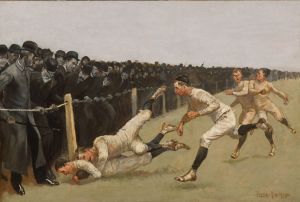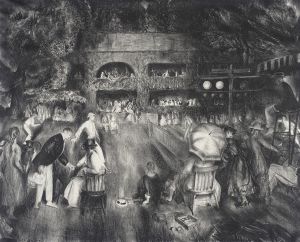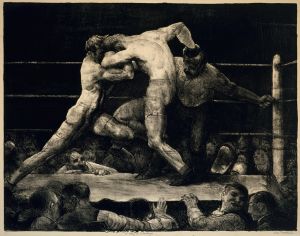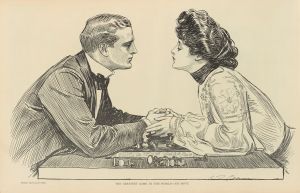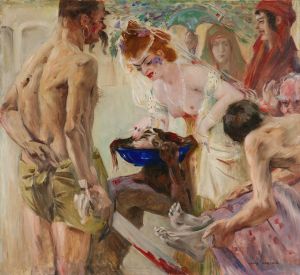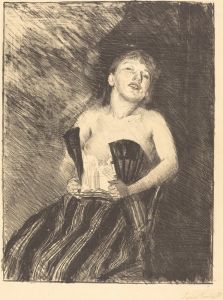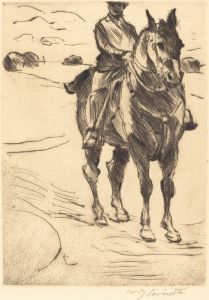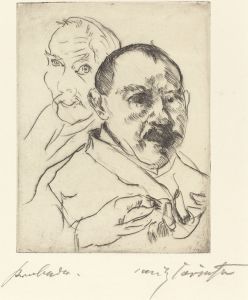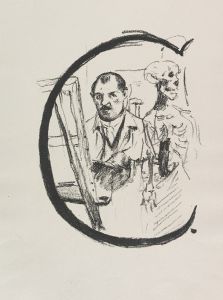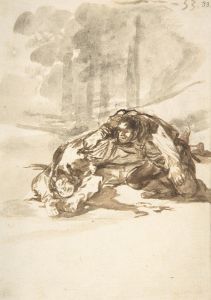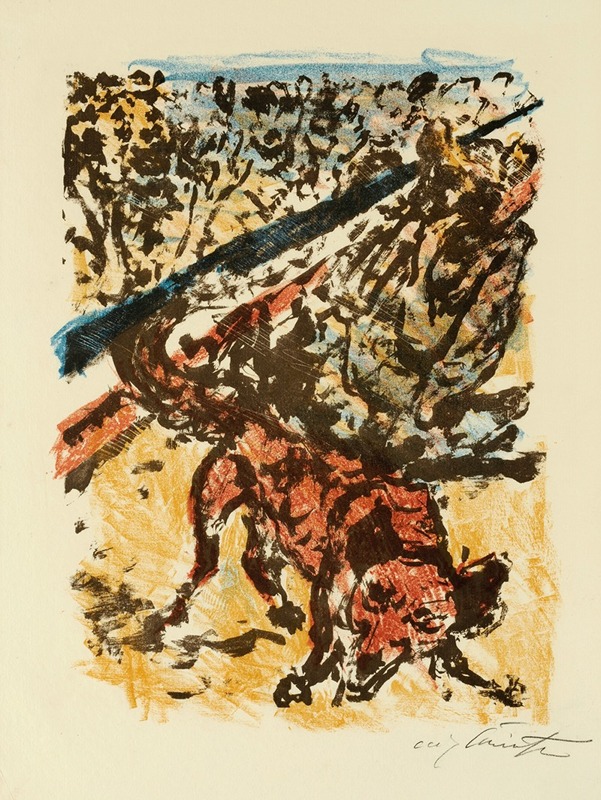
Wolf und Fuchs kämpfen gegeneinander; Reinecke siegt schliesslich mit unfairen Mitteln
A hand-painted replica of Lovis Corinth’s masterpiece Wolf und Fuchs kämpfen gegeneinander; Reinecke siegt schliesslich mit unfairen Mitteln, meticulously crafted by professional artists to capture the true essence of the original. Each piece is created with museum-quality canvas and rare mineral pigments, carefully painted by experienced artists with delicate brushstrokes and rich, layered colors to perfectly recreate the texture of the original artwork. Unlike machine-printed reproductions, this hand-painted version brings the painting to life, infused with the artist’s emotions and skill in every stroke. Whether for personal collection or home decoration, it instantly elevates the artistic atmosphere of any space.
Lovis Corinth was a prominent German painter and printmaker, known for his significant contributions to the transition from Impressionism to Expressionism in the late 19th and early 20th centuries. One of his works, "Wolf und Fuchs kämpfen gegeneinander; Reinecke siegt schliesslich mit unfairen Mitteln," reflects his interest in mythological and allegorical themes, which were prevalent in his oeuvre.
The title of the painting translates to "Wolf and Fox Fight Against Each Other; Reinecke Finally Wins with Unfair Means." This title suggests a narrative element, possibly drawing from the medieval beast epic "Reynard the Fox" (Reineke Fuchs in German), a popular story in European folklore. The tale of Reynard the Fox is a satirical allegory that features anthropomorphic animals and critiques human society, politics, and morality. In these stories, Reynard is a cunning fox who often outsmarts other animals, including the wolf, through deceit and trickery.
Corinth's painting likely captures a scene inspired by this narrative, emphasizing themes of conflict, cunning, and moral ambiguity. The depiction of animals in combat, with the fox ultimately prevailing through unfair means, aligns with the traditional portrayal of Reynard as a clever but morally questionable character. This aligns with Corinth's broader artistic focus on the complexities of human nature and the darker aspects of life.
Lovis Corinth's style is characterized by vigorous brushwork and a vibrant palette, which he employed to convey emotional intensity and movement. His approach often involved a dynamic composition, where figures are depicted with a sense of immediacy and energy. This technique would have been well-suited to a subject involving conflict and action, such as the battle between the wolf and the fox.
The painting reflects Corinth's mature period, where he combined elements of realism with expressive distortion, a hallmark of his later work. This period was marked by a more personal and introspective approach, influenced by his own experiences and the broader socio-political context of early 20th-century Europe. Corinth's work during this time often grappled with themes of struggle, survival, and the human condition, which are also evident in the allegorical content of "Wolf und Fuchs kämpfen gegeneinander; Reinecke siegt schliesslich mit unfairen Mitteln."
While specific details about the painting's creation, such as its exact date or current location, are not readily available, it remains an example of Corinth's engagement with narrative and allegory. His ability to infuse traditional stories with contemporary relevance and emotional depth is a testament to his skill as an artist and his understanding of the enduring power of myth and folklore.
Overall, Lovis Corinth's "Wolf und Fuchs kämpfen gegeneinander; Reinecke siegt schliesslich mit unfairen Mitteln" exemplifies his artistic exploration of complex themes through the lens of allegory, rendered with his distinctive expressive style.





